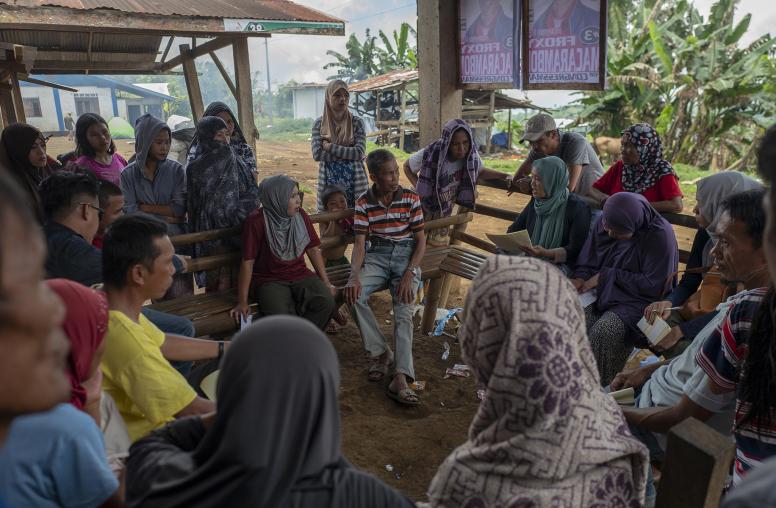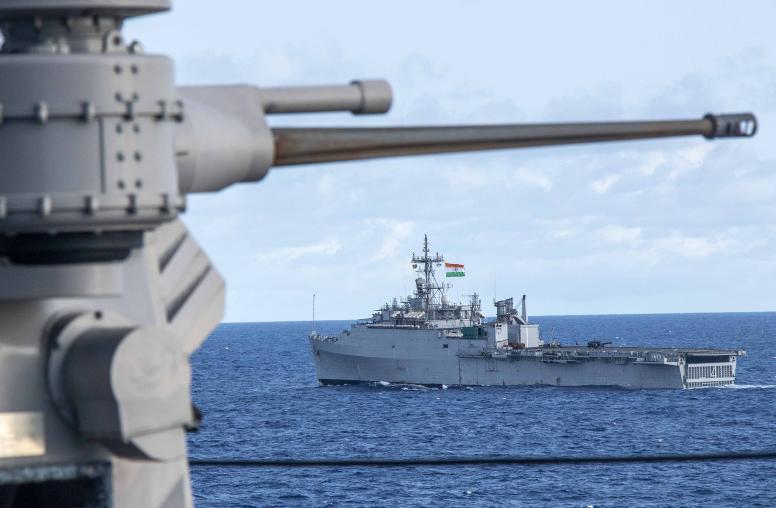Terror on the Internet
The New Arena, the New Challenges
THE USIP BOOKSTORE IS TEMPORARILY UNAVAILABLE
Terror on the Internet, a USIP Press book by noted scholar Gabriel Weimann, uses data from an eight-year study to conclude that terrorism on the Web has increased dramatically from 1998 to today.
A dramatic explosion in the number of Web sites operated by terrorist organizations—from just 12 in 1998 to more than 4,800 today—testifies to an alarming terrorist presence on the Internet. This according to a new book by international terrorism expert and noted scholar Gabriel Weimann.
“There is a real war going on in cyberspace but it is invisible to most of us,” explains Weimann. The author describes this war in graphic detail in his new book, Terror on the Internet: The New Arena, the New Challenges
Using data derived from an exhaustive eight-year study, Weimann chillingly recounts how terrorists use the Internet to carry out their deadly plans on a daily basis. Weimann also addresses the threats posed to our civil liberties by government efforts to constrain cyberterror.
The face of modern terrorism is decidedly different than the face of terror in the past, not least because of the increasing use of the Internet as a means for facilitating terrorist activities. “Postmodern terrorism . . . is less centralized, less structured, less organized, and far more dangerous than the terrorism of the late twentieth century,” says Weimann. The modern, technology-savvy terrorist has emerged. The Internet has expanded the terrorists’ theater of operation, allowing them full control over their communications through the use of the developed world’s cyberspace infrastructure.
Recognizing the gravity of this threat, the United States Institute of Peace invited Weimann to Washington as a senior fellow in 2003–4, enabling him to bring his research together as a book for those who lead the fight against terrorism, as well as for the wider public.
Weimann asserts that while much attention has been paid to the threat of cyberterrorism (hacking into military and civil computer systems to cause death and destruction), far too little attention has been paid to the dangers posed by the terrorists’ daily use of the Internet to organize and coordinate their dispersed activities. The terrorist presence on the web is dynamic: sites appear one day, quickly change formats, and then disappear or re-emerge with altered online addresses. Efforts to prevent al Qaeda from using the Internet have proved useless. If one Web site is hacked or removed from the Net, many others surface with new service providers and new URLs.
Terror on the Internet offers an overview of the myriad of terrorist organizations on the Internet. Drawn from all corners of the globe, they include Hamas, the Basque ETA Movement, Hezbollah, Peru’s Tupak-Amaru and Shining Path, Afghanistan’s Lashkar e-Toyba, the insurgents in Iraq, the Chechen rebels, and of course, al Qaeda. Their Web sites target not only current and potential supporters but also the media and public in the societies they terrorize. The terrorists typically make no mention of their own violent activities and instead highlight what they claim is the righteousness of their cause and the ill treatment of their supporters.
Terrorism functions by delivering threats intended to create fear and helplessness among its target audiences. “Whether it is the public arenas of France’s Reign of Terror or the global coverage of the 9/11 attacks, terrorists have been dependent on whatever means were available to let their actions and threats be known. With the advent of the Internet, means of communication become internalized and are controlled by the terrorists themselves,” says Weimann.
Key Elements in the Use of the Internet Weimann reveals how terrorists use the Internet on a daily basis for:
- Data Mining — The Internet is basically a vast digital library. Terrorists use the web to research key details about targets such as nuclear power plants and airports, and even about counterterrorism measures. In fact, terrorists can draw 80 percent of the information they need for an attack from the Internet by using sources legally available to the public.
- Networking — The Internet lets diverse terrorist groups communicate and coordinate their activities effectively. The web reduces the cost of communications and increases the variety and complexity of the information that can be shared. In fact, the new “loose leaderless resistance” structure of terrorist groups, as opposed to the hierarchical structure favored in the past, lends itself perfectly to the unstructured approach intrinsic to Internet communications.
- Recruitment and Mobilization — Recruitment is essential for the sustainability of any terrorist organization. Users who seem most interested in the organization’s cause or well suited to carrying out its work are contacted. Recruiters also use interactive Internet technology to roam chat rooms and cybercafes, looking for sympathizers and potential recruits.
- Instructions and Online Manuals — The Internet abounds with sites offering manuals and handbooks that teach readers such topics as how to build chemical and explosive weapons. A 2005 search on Google’s gigantic search engine using the keywords “terrorist” and “handbook” turned up nearly eight thousand matches.
- Planning and Coordination – The Internet is invaluable to terrorists in planning and coordinating specific attacks. Al Qaeda operatives relied heavily on the Internet for the 9/11 attacks. Terrorists from all organizations routinely send messages through public e-mail and use chat rooms to devise attacks and coordinate their actions.
- Fundraising — Using demographics culled from personal information entered in online questionnaires and order forms, terrorists use the Internet to identify likely sympathizers. These people are then solicited for donations through e-mails sent by groups fronting for the terrorists.
Attacking other Terrorists — The Net is also used as a virtual battlefield between (and within) terrorist organizations. Debates between such groups as Hamas and al Qaeda, as well as conflicts within the groups themselves, are played out over their Web sites.
The Implications for Our Civil Liberties
Weimann suggests that we must be careful not to sacrifice our own civil liberties in the name of preventing terrorism at all costs—instead, we must find a “golden path,” or middle ground. With future terrorists bound to be even more computer-savvy, terrorism on the Internet is sure to become more sophisticated and dangerous, but this challenge must be met without overstating the present level of threat. Furthermore, in this new arena, it’s not just the terrorists who can make use of the Internet—so, too, can peacemakers. Weimann concludes with a call for increasing use of the web for activities such as virtual diplomacy and the nonviolent management of political conflict.
Terror on the Internet is a powerful, persuasive, and groundbreaking book that reveals how terrorists are making full use of the technology available in today’s Internet-focused world.
About the Author
Gabriel Weimann is a professor of communication at the University of Haifa, Israel, and a former senior fellow at USIP. A prolific analyst of terrorism and the mass media, his publications include over one hundred scientific articles and five books, among themCommunicating Unreality: Mass Media and Reconstruction of Realities and The Theater of Terror: The Mass Media and International Terrorism. Weimann has been a visiting professor at the University of Pennsylvania, Stanford University, Hofstra University, Lehigh University (USA), University of Mainz (Germany), Carleton University (Canada), and the National University of Singapore. He has received numerous grants and awards from organizations such as the Fulbright Foundation, the Canadian Israel Foundation, the Alexander von Humboldt Stiftung, the German National Research Foundation (D.F.G.), the Sasakawa Foundation, and USIP.




